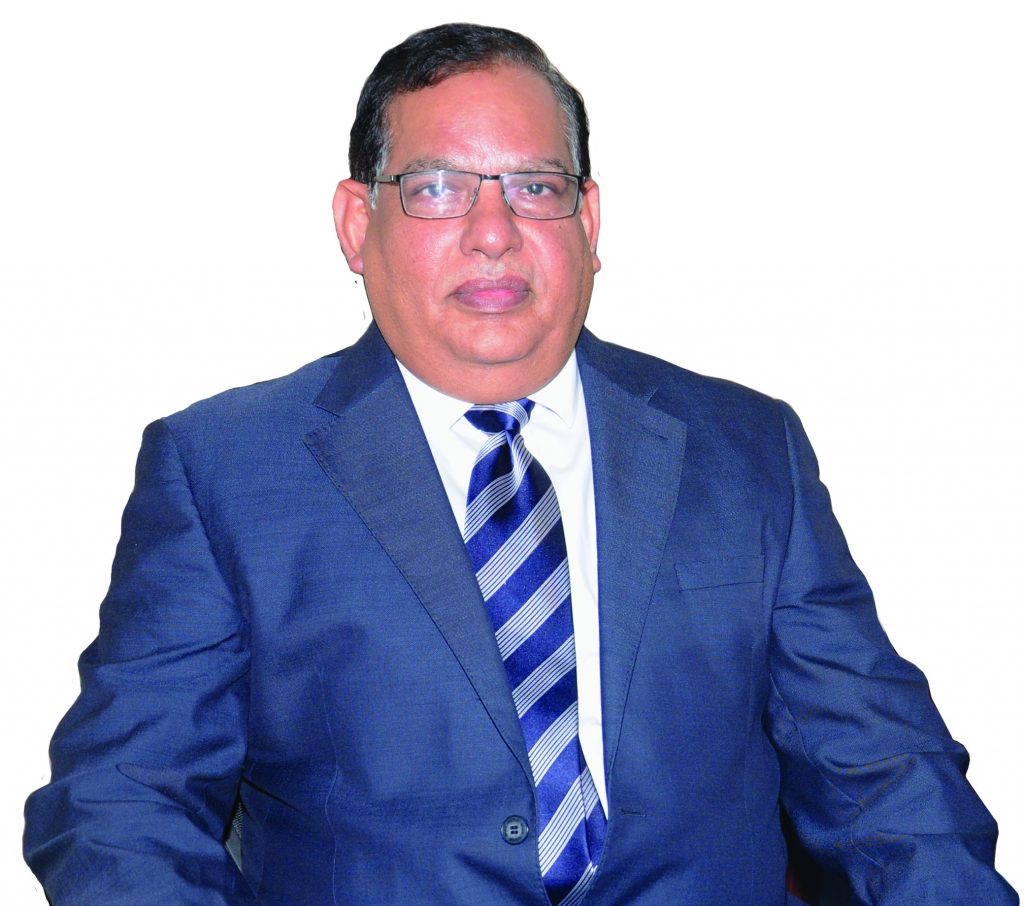
Shreyas Shipping and Logistics is a part of the 40-year-old global conglomerate Transworld Group. We are a pioneer and market leader in domestic coastal container shipping services, and transhipment services. We offer door-to-door logistics support services through our associate entity – Avana Global Logistics. Over FY15-19, our shipping revenue CAGR was 21% to Rs 6.3bn from Rs 3bn. We currently operate 13 vessels with a total container capacity of 24,519 TEU – which has grown by around three times from 8,295 TEU capacity in FY15 at which time we had six vessels. We operate services on the west and east coast, including Colombo and Jebel Ali. In FY18, we enhanced our service offerings into break-bulk cargo shipping.
Utilization levels on all services from North to South and West to East remained at around 90%, and 70% on the reverse leg were during 4QFY19. The government has allowed a mix of domestic and EXIM containers, which has helped the company to improve utilization. Apart from chartering out our vessels (which are large sized), we are also chartering in smaller-sized vessels to fit the cargo requirements on certain trade lanes. We are also operating joint services with other players in coastal shipping to increase capacity without owning vessels.
International Maritime Organization regulation for low sulphur will be applicable from 1 January 2020 to control the pollution produced by the shipping industry. It will increase costs for shipping companies as they need to shift to using low-sulphur fuel oil (LSFO) from the heavy oil that they are presently using, which will cost about US$ 75-125 more per tonne. Another option is to install exhaust gas cleaning systems called “scrubbers”; by doing so, they can continue to use high-sulphur fuel oil (HSFO). Scrubber installation will increase capital expenditure and allow companies to use low-cost HSFO fuel oil. Those with bigger ships will go for scrubbers, because their fuel consumption is significantly higher due to longer voyages.
The Cabotage relaxation is not going to affect Indian players. Foreign players may benefit in limited ways, but there are other operational challenges. Unless we deal with these effectively, Cabotage is not going to help trans-shipment. Main lines are not going to shift here and main lines are not going to call all these ports. It may affect domestic cargo movement, as revenue generated from EXIM containers on reverse legs helps in subsidising costs for domestic movements. Absence of such EXIM movement may increase costs for domestic movement.
Operating costs in India are significantly higher due to taxes and duty and availability of low-cost funding. The government has rationalised duty on bunker, which is positive step for the sector. We are also looking at inland waterways development and support from the government, as it is a natural extension to our business. We welcome the recent policy of the government to allow Indian vessels to call at ports of Colombo and Chittagong with domestic cargo on board.
We currently operate 13 vessels with a total container capacity of 24,519 TEU – which has grown by around three times from 8,295 TEU capacity in FY15 at which time we had six vessels
We have acquired all vessels at a low market value; hence, we are in a very comfortable position in terms of asset value. Freight rates are generally governed by market forces, both on coastal and international businesses.
The way forward to maintain leadership is to ensure reduced cost of operation and be competitive to maintain business share. This can only be achieved by larger vessels and larger volumes, which we are adopting. We are also having mix of charter in and charter out of vessels depending on the market condition.
Over the years, we have increased our presence across the entire Indian coastline, covering most ports and container terminals. Out of the four fixed routes that we operate in, three are domestic. We reach out to ports like Mundra, Kandla, Pipavav, Cochin, Tuticorin, Mangalore, Krishnapatnam, Chennai, Paradip, Hazira, and Kolkata. About half of our cargo constitutes heavy construction material like cement, tiles, and marbles, and the rest is fertilizers, food grains, cotton, and others. We have increased our fleet from 6 vessels in FY14 to 13 currently, and majority of vessels that we added have been larger capacity ones, to provide economies of scale. In FY18, we acquired four vessels in one financial year for the first time in our history! Two container vessels, and two are multi-purpose ones, which we purchased to support the start of our break-bulk cargo business. We are planning to increase our fleet to 25 vessels to support growth, and with the acquisitions of more higher-capacity vessels, our company will enjoy significant economies of scale and reduced cost of operations.
Subscribe to enjoy uninterrupted access